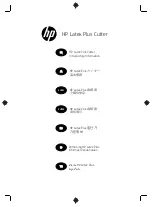
| 67 |
2.7.3 electrical safety
•
Before each use, check the power tool,
connection cable and plug for damage.
Damaged equipment is dangerous, and no
longer safe to use.
•
note the mains voltage! The power source
voltage must match the details given on the
rating plate of the power tool.
•
If using the power tool with mobile
generators, loss of power or atypical
behaviour on switching on is possible.
•
Do not use the power tool if the cable is
damaged. Do not touch the damaged cable
and disconnect the mains plug if the cable is
damaged while you are working.
Damaged cables increase the risk of an electric
shock.
•
Only use extension cables suitable for the
machine’s power consumption and which
have a minimum core cross-section of
1.5 mm
2
. If you use a cable drum, always
completely unwind the cable.
The rolled up cable can heat up and start to
burn.
•
external electromagnetic interference (e.g.
mains voltage fluctuations, electrostatic
discharges) can cause the power tool to
switch off automatically.
In this case, switch off the power tool and then
switch it back on again.
2.7.4 Safety of people
•
Wear personal protective equipment and,
depending on the work situation, use:
Full-face protection, eye protection
or safety glasses/goggles, hard hat
and special apron
Protect yourself against debris thrown
up by wearing a hard hat, safety
goggles or face protection and wear an
apron, if necessary.
Hearing protection
The typical A-weighted sound
pressure level of this power tool is over
85 dB (A) while working with the tool.
If you are exposed to loud noise for
lengthy periods, there is a risk of
hearing damage or even hearing loss.
Anti-vibration safety glove
At a release value A (8) for arm-hand
vibrations of over 2.5 m/s
2
, the wearing
of anti-vibration safety gloves is
recommended.
non-slip safety footwear
Dust mask, half-face filter mask or
face mask respirator
Inhaling fine mineral dust can cause
health damage. We recommend
wearing a face mask respirator with
filter class P2 or P3 (to EN 149:2001).
Working with diamond dry-cutting
discs is a grinding process in which
extremely fine dust is produced. When
cutting materials containing quartz
there is a very high risk of silicosis; the
machine should therefore only be used
in conjunction with a suitable dust
extractor (e.g. a special MAKITA dust
extractor).
•
If the machine is switched on, do not direct
insert tools towards your own or other
people’s bodies. Do not touch or take hold
of the tools.
2.7.5 Hazards when using and
handling the power tool
•
When switching on and while working with
the power tool, hold onto it tightly at both
handles and place your body and arms
in a position in which they can absorb
the kickback forces or reaction torque on
starting up. Always put the machine down
firmly on both rollers.
The person using the tool can control the
kickback and reaction forces by taking suitable
precautions.
•
Change insert tools carefully and only use
the mounting tools provided, if they are in
perfect condition. Disconnect the mains
plug before changing the insert tool.
Use of the mounting tool provided prevents
damage to the power tool and insert tool.
•
After fitting the diamond dry-cutting discs,
before switching on, check that the diamond
dry-cutting discs are fitted correctly and can
rotate freely. ensure that the diamond dry-
cutting discs do not touch the protective
hood or other parts.
•
Do not expose power tools to extreme heat
or cold.
Mechanical and electrical damage can occur
during extreme heat and/or cold.
















































